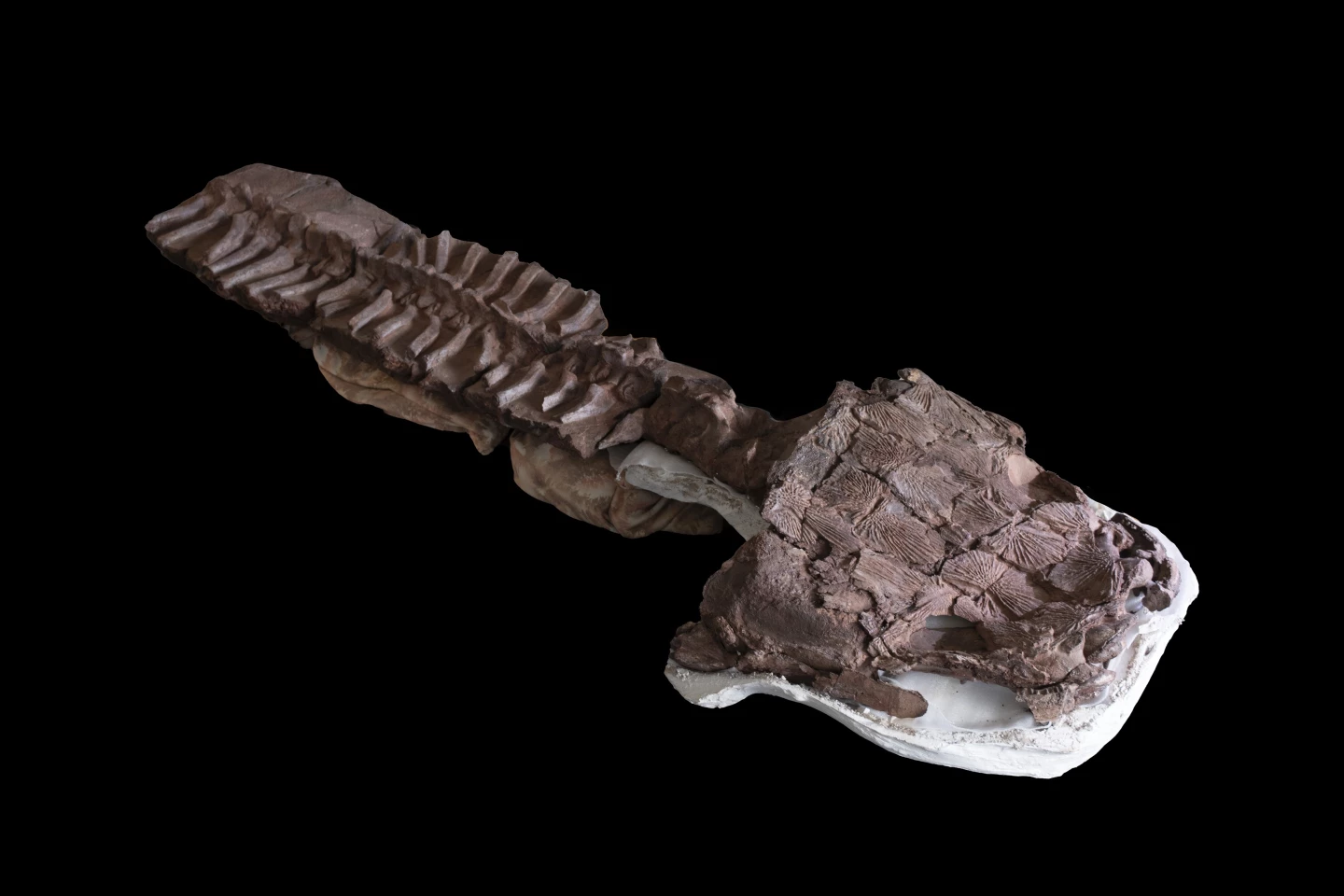Long before dinosaurs roamed the Earth, another giant predator claimed the top spot in its environment. Meet Gaiasia, a huge salamander-like creature that stalked the Permian swamps.
In case you’re picturing a cute little axolotl, Gaiasia jennyae was anything but. This ancient amphibian measured about 2.5 m (8.2 ft) long, and judging by the skull and jaw structure it could have chomped down on even large prey that wandered too close.
“Gaiasia jennyae was considerably larger than a person, and it probably hung out near the bottom of swamps and lakes,” said Jason Pardo, co-lead author of the study. “It’s got a big, flat, toilet seat-shaped head, which allows it to open its mouth and suck in prey. It has these huge fangs, the whole front of the mouth is just giant teeth. It’s a big predator, but potentially also a relatively slow ambush predator.”
Four partial specimens of Gaiasia were discovered in the deserts of Namibia – although of course, back in the Permian period when it lived, some 280 million years ago, the area was swampy wetlands. At that time, this region wasn’t where modern-day Africa currently sits, but was much farther south, right near Antarctica. Earth was just coming out of an ice age, and Gaiasia’s habitat was quite cold and wet, while more northern regions were drying out and becoming more forested.

As these southern regions clung to the old ways, so too did the life that called it home. The team says that Gaiasia is a strangely late member of a group of organisms called stem tetrapods. Basically, they were the first to come up with the now-common body plan of four limbs and a head coming off a central trunk. Most of those early experimenters were thought to have died out by the time Gaiasia rolled around.
“It’s a holdover from that earlier group, before they evolved and split into the groups that would become mammals and birds and reptiles and amphibians, which are called crown tetrapods,” said Pardo. “It’s really, really surprising that Gaiasia is so archaic. It was related to organisms that went extinct probably 40 million years prior. There are some other more archaic animals still hanging on 300 million years ago, but they were rare, they were small, and they were doing their own thing. Gaiasia is big, and it is abundant, and it seems to be the primary predator in its ecosystem.”
The discovery of this weird swamp monster helps plug some gaps in the fossil record, the team says.
The research was published in the journal Nature.
Sources: Field Museum via Scimex





